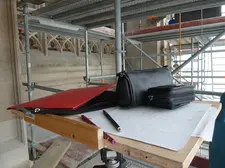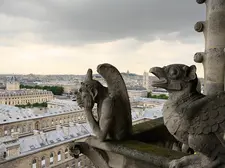Programme profile




Art – History – Research
As a master’s student in Bamberg, you will explore the subject of art history in its full breadth. What is more, the programme’s many connections within the University allow you to pursue special fields of specialisation. Thanks to our close collaboration with building and architectural researchers, as well as with materials and preservation scientists in the joint Institute of Archaeology, Heritage Conservation Studies and Art History, you have the opportunity to study works of art from both a cultural-historical-theoretical perspective and from a materials science and technical perspective. Furthermore, there are well-established ties to museums such as the Germanisches Nationalmuseum in Nuremberg or the Rijksmuseum in Amsterdam, where you can gain insights into the work done at museums by attending relevant courses.
Curricular focus ares
- Architectural History and Building and Architectural Research
- Art Theory
- Visual Studies
Degree programme structure
Methods in art history | 15 ECTS points |
Art history of the medieval period | 15 ECTS points |
Art history of the early modern period | 15 ECTS points |
Distribution area: Imported modules from other subjects | 20 ECTS points |
Art history of the modern period | 15 ECTS points |
Specialisation module | 10 ECTS points |
Master’s thesis | 30 ECTS points |
Modules | ECTS points |
Core studies Methods in art history I and II | 15 |
Art history of the medieval period I – IV | 15 - 30 |
Art history of the early modern period I – IV | 15 - 30 |
Art history of the modern period I – IV | 15 - 30 |
Specialisation module | 10 |
Distribution area | 20 |
Master’s thesis | 30 |
In the master’s degree programme in Art History, you will graduate with an academic and professional qualification. The aim of the programme is to provide students with initial and advanced subject-specific skills, as well as general expertise in the humanities and cultural studies. At the University of Bamberg, the MA Art History is available as a consecutive and non-consecutive option, meaning you do not need a bachelor’s degree in art history to be eligible for admission.
